Chris Grainger-Herr on the New 2020 IWC Portugieser Collection, the Big Pilot Safari and COVID-19 (warning: long read)
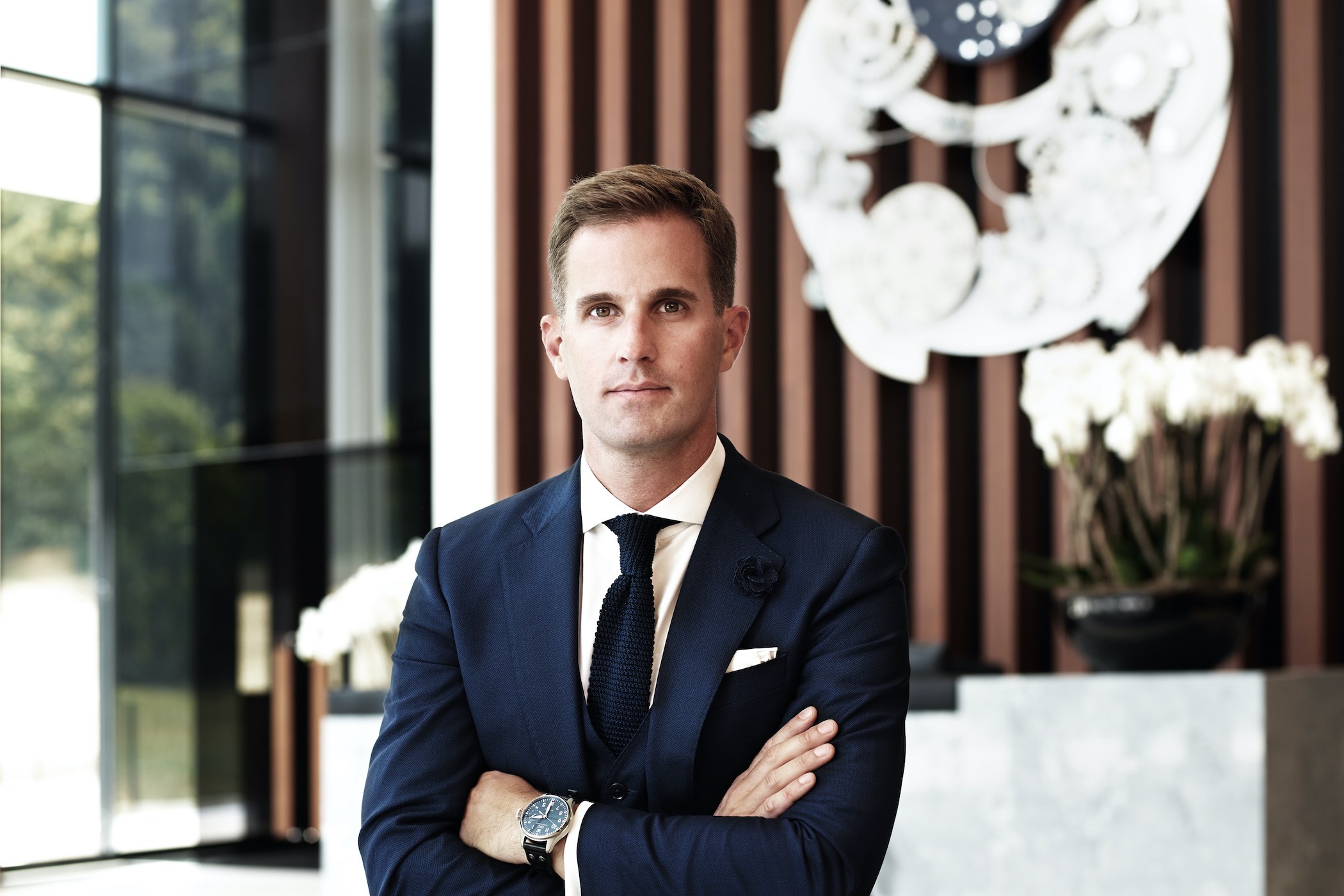
I guess I need to start this interview with an apology. Sorry, this interview is long, very long, comprising close to 3,000 words. However, the conversation with Chris Grainger-Herr, CEO of IWC Schaffhausen, was great and there was just so much to say about the new Portugiesers. We had the conversation two weeks ago, in the midst of the COVID-19 lockdown. Chris was in his office, in Schaffhausen, and we had a zoom meeting. It’s weird, not sitting together for a talk, but it is what it is and I guess for the foreseeable future this is going to be the new normal.
Personally I am quite pleased with the new Portugieser line-up; there’s a lot to like! Of course, I’d love to put the new Portugieser Perpetual Calendar on the wrist and see/feel how the 42mm diameter works with such a classic beauty. And the Portugieser Automatic 40 with its small seconds sub-dial at 6 o’clock looks fabulous and I’m curious how the old Portugieser and the new one with in-house movement will compare, in the metal. Of course, I was also curious to hear if production had been started up again, but that question was dodged with the anticipated ‘evasive’ answers – the same response you get when you ask about annual production figures… Well, rest assured, we had enough to talk about. Good luck with the 3k words!
Frank Geelen, MONOCHROME: It’s the year of the new Portugieser. We’ve already seen the new Portugieser Chronograph with in-house calibre 69000. What are, according to you, the most defining new models in the Portugieser collection?
Chris Granger-Herr, CEO of IWC Watches: To really answer that, we have to look at the DNA of that collection. You know the story very well, but it’s really all about our connection to water and navigation. You think about the journey of Jones (Editor’s note: founder of IWC Schaffhausen) already crossing the Atlantic, then using water power. The hydropower from the river to set up the factory and power the factory, and then we see that leading to his reputation for precise pocket watch movements, which meant that our watches started to be used as the navigation watches on ships and boats all around the globe. That was really the starting point for this idea of these Portuguese businessmen who wanted to order wristwatches with marine chronometer precision and IWC was only able to satisfy that requirement by putting an oversized pocket watch movement into a wristwatch.
Of course, back in the 1930s, all of the watches were tiny and square and so on. So to make a 40.5mm hand-wound three-hand watch was really not what clients expected at the time. These first watches were made in relatively small numbers all the way to the late 1980s when there was a German special edition. But, what it did, even though it was maybe a little bit ahead of its time, as in those days the trend wasn’t towards oversized case design, it defined the DNA of the Portugieser. It was the DNA of the pocket watch sized case, together with that clear legible dial and Arabic numerals and point arrows, and that marine chronometer precision that turns the watch into a nautical instrument for the wrist.
The Ref. 325 defined the DNA of the Portugieser
We then look at how this went on in our history and say there have been three pillars that define the Portugieser. You see the Ref. 325 and then, later on, the Portugieser chronograph in the 1990s. Then, secondly, the sort of complicated Portugieser, which is based on the introduction of Kurt Klaus’ perpetual calendar into the Portugieser in 2003, and then finally the Yacht Club, which was the sports elegant version of the Portugieser launched in 2010. And it’s those three pillars that we’re building on now and completing that collection if you will.
There were a couple of things that were just missing from the family. That is both a more wearable automatic model and a wearable perpetual calendar. And a number of complications and then, of course, a factor we have not had is a metal on metal sports elegant chronograph, which we would add, by making sure that the third generation Yacht Club is primarily is a metal on metal bracelet model. So, really we now have a collection of all in-house movements in the Portugieser collection that are all made in the Manufaktur Zentrum.
One of the things I’m especially proud of is that we have three in-house chronograph calibres in the same family. The 69 in the Portugieser chronograph, the 89 in the Yacht Club, and the 59 in the Portugieser Mono-pusher, actually meaning that we have a huge range of different in-house calibres that basically are the main calibres from Schaffhausen and the Portugieser line.
Then when we go through the actual sort of models I’m introducing, it’s that 40mm automatic that’s directly based on the DNA of that 325, so a more wearable size. The 82 calibre in-house movement, glass caseback and small seconds at 6 o’clock with no date, so very pure and very Portugieser. Also, it’s the new access price point of the new Portugieser line at 7,500 EUR. We were able to position it just below the Portugieser chronograph, which now features the in-house 69 calibre chronograph movement, glass caseback and the new folding clasp system that makes sure that the watch sits more centred on the wrist.
As for the complications, we’re launching a perpetual calendar based on calibre 82, which then means we were able to reduce the size from 44mm to 42mm and have a complimentary offering with a three sub-counter perpetual calendar with a leap year indication, making sure that this becomes again a more wearable perpetual calendar (and the four-digit year display is still available on the big Portugieser Perpetual Calendar.)
Actually, that is rather interesting because it’s the first time I see a perpetual calendar from IWC in a 3-6-9 layout. Usually, IWC Perpetual Calendars feature a sub-dial at ‘every corner’ of the dial. So it’s the first time we see the classic 3-6-9 layout with no sub-dial at 12. Was it a deliberate choice to move the moon phase to a different position and create a 3-6-9 layout?
Yes, I think there are two reasons for that. Number one is that I really think it’s a nice logical architecture where the Portugieser Automatic 40 has one sub-counter being the small seconds and the Chrono has two and the Automatic Seven Days has two and the small PPC (Portugieser Perpetual Calendar) has three sub-counters. Then it goes to four sub-counters for the big complications.
And then secondly, it gives us the flexibility to turn the perpetual calendar into a better ‘tourbillon combination’ complication in the future where you can have that 12 o’clock position available for a tourbillon complication. It’s always been a little bit of a struggle with a big perpetual calendar of the 51-calibre where you’re trying to better integrate that dual function of tourbillon and moon phase, but you have to re-engineer basically the entire dial layout to make that possible, so this gives us the flexibility to upgrade the movement and integrate complications in the future.
And as you say, it’s a very classic layout and when you see it in the flesh, and that’s what I like about this watch, is the fact that despite being quite a bit flatter and smaller than the 44, it totally feels like a Portugieser case on the wrist. Add that balance between still having that instrument feel, it has a presence and is a much more wearable form and it’s actually one that I’ve started to pick up and wear time and again, even though most of the things I have access to are double the cost (laughs), but still it’s something I really enjoy, wearing this watch.
You mentioned already that the three in-house chronograph movements are all made in Schaffhausen, which is quite a big achievement for IWC. When we take it from the previous Portugieser chronograph movement to your new in-house movement, there had to be many adaptations and changes from one movement to the other.
Yes, but not in terms of dial layout as we engineered the 69 calibre specifically to fit both the three sub-dial layout that we have in the Spitfire chronograph, for example, but also the two sub-dial layout, no date Portugieser chronograph, so we made sure when we designed the movement that it would fit those iconic pieces by IWC.
What you have now is obviously the column-wheel in this chronograph cal. 69 and a lot of technical updates and a lot of innovation that we’re bringing. One thing I was really looking for is that you have quite an IWC-specific haptic feel of the pusher activation and you feel that in the chronographs and it’s quite a different pusher experience. That was always something that I wanted to improve on and we managed on the 69 to have that very engineered feel to the pushers and the reset function.
And, of course, it’s a movement that is absolutely spot on in terms of quality. That was also one of the key reasons for being able to scale this movement and that we were able to then have the ability to introduce the 8-year warranty, based on all these developments which have been made through the new manufacturing centre in terms of engineering quality. => check here for the video we filmed inside the new manufacture.
And design-wise, you kept the Portugieser Chronograph pretty much as it was. That is something I saw with a lot of pleasure, well you know my position on this, I think. But how easy or difficult was it to keep the same proportions and looks?
It’s actually much harder to achieve than you think. When we designed all of the characteristics of the movement and the way the movement is held in the case, we redesigned the case completely from the ground up. I mean, the only thing you can argue is more or less the same thing as before is the dial with the exception of the design of the logo, but the way the hands have been manufactured and the way the case is integrated with the case components and glass caseback, everything is new but feels and looks the same. So that’s exactly what we were trying to do. But, we need to upgrade and correct both the technical content and the ergonomics and make sure we really have a strong package in one of the most iconic designs for IWC.
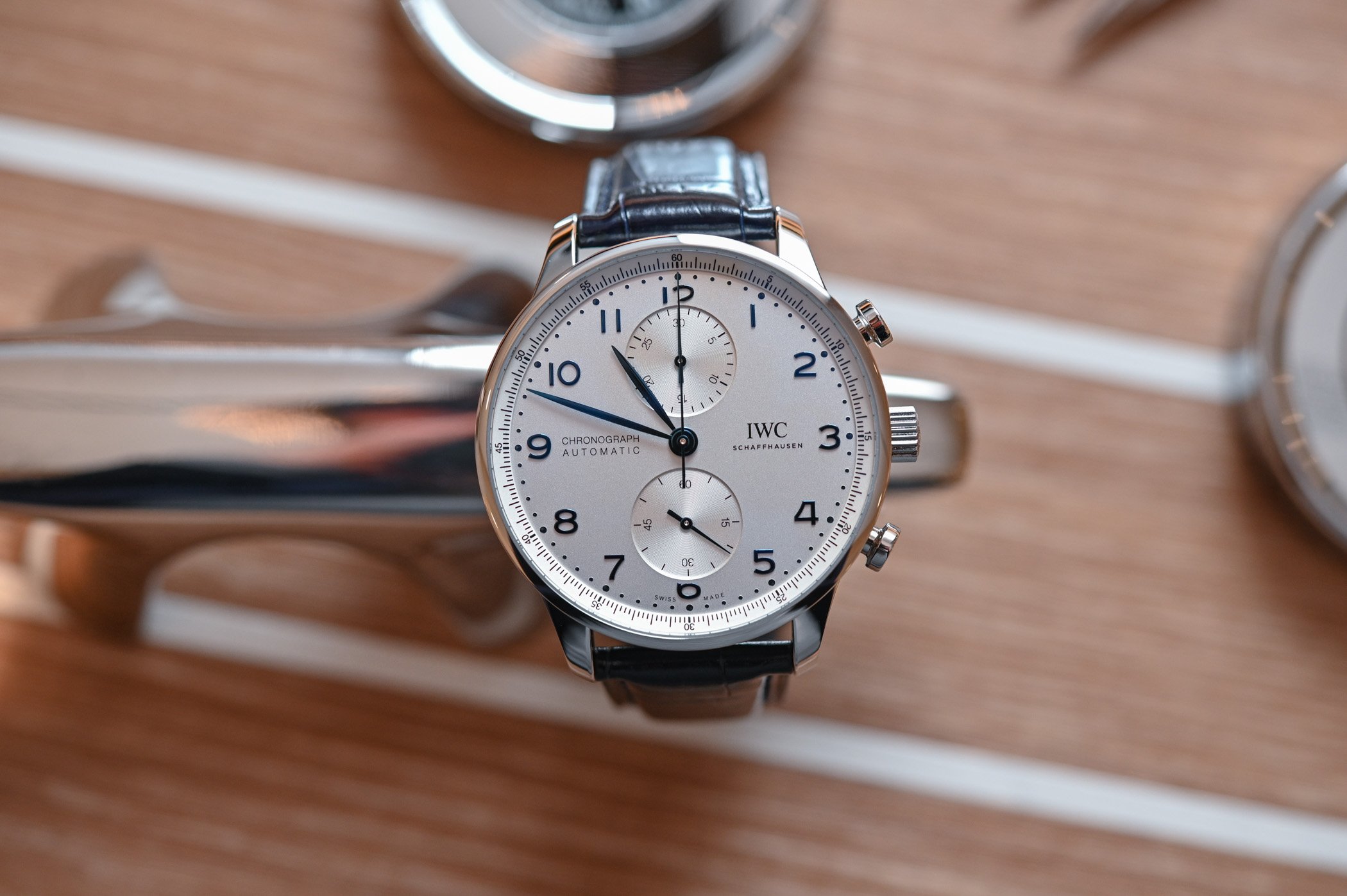
Very happy to see that. The perpetual calendar, we’ve already talked about it briefly. Is this a continuation of the old perpetual calendar developed by Kurt Klaus that was used or is it entirely new from the ground up?
It’s not from the ground up, but it’s re-engineered. Possibly you’ll see a completely different layout because of the dimension of the movement and year indication and so on. What’s underneath, technically, is a first-class module with some upgrades already in this movement as we’re also developing the next level of the big perpetual calendar as well. One of the key things is in the date switch function; there’s a lever which basically grants the movement from desynchronizing at the point of setting. That’s one of the things that we are continuously working on to make sure that the link synchronization between all the different aspects of time and movement, date and moon, comes together more and more because obviously this is one of the risks of perpetual calendars; by error, it desynchronizes that much, you’d need a watchmaker intervention, so this is something we’re working on to make sure we improve over time.
By the way, you’re wearing something that makes me a little bit jealous (Editor’s note: Chris is wearing the Big Pilot Safari). I just did an interview with a collector who owns a BP Safari. I was too late when you launched the Safari on Instagram. I desperately wanted one too, so, in the end, I bought an old 5002. It was very good just to show the power of Instagram. Was this intended as a social media experiment?
What’s interesting with these things, that I often discuss with the team, is that I don’t think you can force this. But in this case with the Safari it just happened totally organically. But initially, it was not the plan. It wasn’t even the plan to launch the watch at the time and then I literally responded to what happened. I think this is like when you have the marketing discussions of how we can make something go viral. Well, you can’t. And you just have to go along with it, and if it happens, it happens. There’s no way you can create social media hype and there’s just nothing like when things happen organically. You don’t have to push it and you don’t have to force it. That’s also why, to the dismay of many of our other clients, this was a little bit uncoordinated as it literally just happened. Of course, we had no system in place at the time to ask all of the right people first and so on, so it ended up a bit chaotic.
A few questions on the current situation. A few weeks ago we ran a story on potential changes to the industry and now we think there are quite a few things that will create changes a bit faster than usual. What do you see as the main transformations necessary for the industry to survive?
It’s interesting as obviously it’s anything but a positive situation in terms of the suffering and people losing their lives, and it’s anything but what we wanted. On the other hand, I think the world has had a crash course in video calling and remote working. And quite interestingly, certain changes which had been very slow over the years have now been forced very quickly and everyone discovered that it works. We all discovered Zoom and new ways of being in touch with each other and presenting things digitally all via live streaming. I do think this has created a habit and it’s probably also accelerated things like people’s online shopping habits in a way that’s just out of sheer need and requirement of the current situation. You see the explosion of activity at Amazon, for instance.
if anything good is coming out of this, it’s the realization that we have to tackle the big topics and challenges together
It’s also for people that may have been hesitant in the past and it’s now become part of normal life. I think that clearly will drive a certain degree of changed behaviour. I don’t think it will end the future of retail shops or personal contact or travelling or anything like that. There are a couple of things I hope to see happen at the moment. One is it’s the first time in my lifetime where we’ve had a really strong demonstration of the fact that our globalized world is really connected as one single system, really tightly. Because before that there was all the political protectionist discussions and licensing fees and cross-border streaming and more of this, there was still this idea that was us and them. Like it’s just another part of the world that doesn’t affect us immediately even though all of our things are produced there. I do think that this really made us realize how tightly the entire global system is connected and how one corner of the world can affect the rest of the world very quickly.

So, if anything good is coming out of this, it’s the realization that we have to tackle the big topics and challenges together. It’s not a question of religion or country of political divides or cultures, but it’s a question of either addressing it or not addressing it and that’s hopefully something that’s come out of this quite strongly.
The second thing, I think, is that it makes us think about how we consume resources. I think everyone’s seen how the Earth has, to a certain extent, recovered quite quickly now through this radical change in how we live and our activity and I hope that in a certain way it makes us think twice about the balance between all the positive aspects of globalization and connectiveness and being there and travelling and experiencing each other’s cultures, which is the greatest peacekeeper on Earth which is fantastic and at the same time questioning a little bit how we consume and how often we replace things and how many times we need to update our electronic gadgets and throw them away. And certain things can just be done by video conference and we don’t need to get on a plane to go somewhere and see a Powerpoint presentation. That little bit of a change will hopefully balance it out in terms of how we deal with our planet around us.

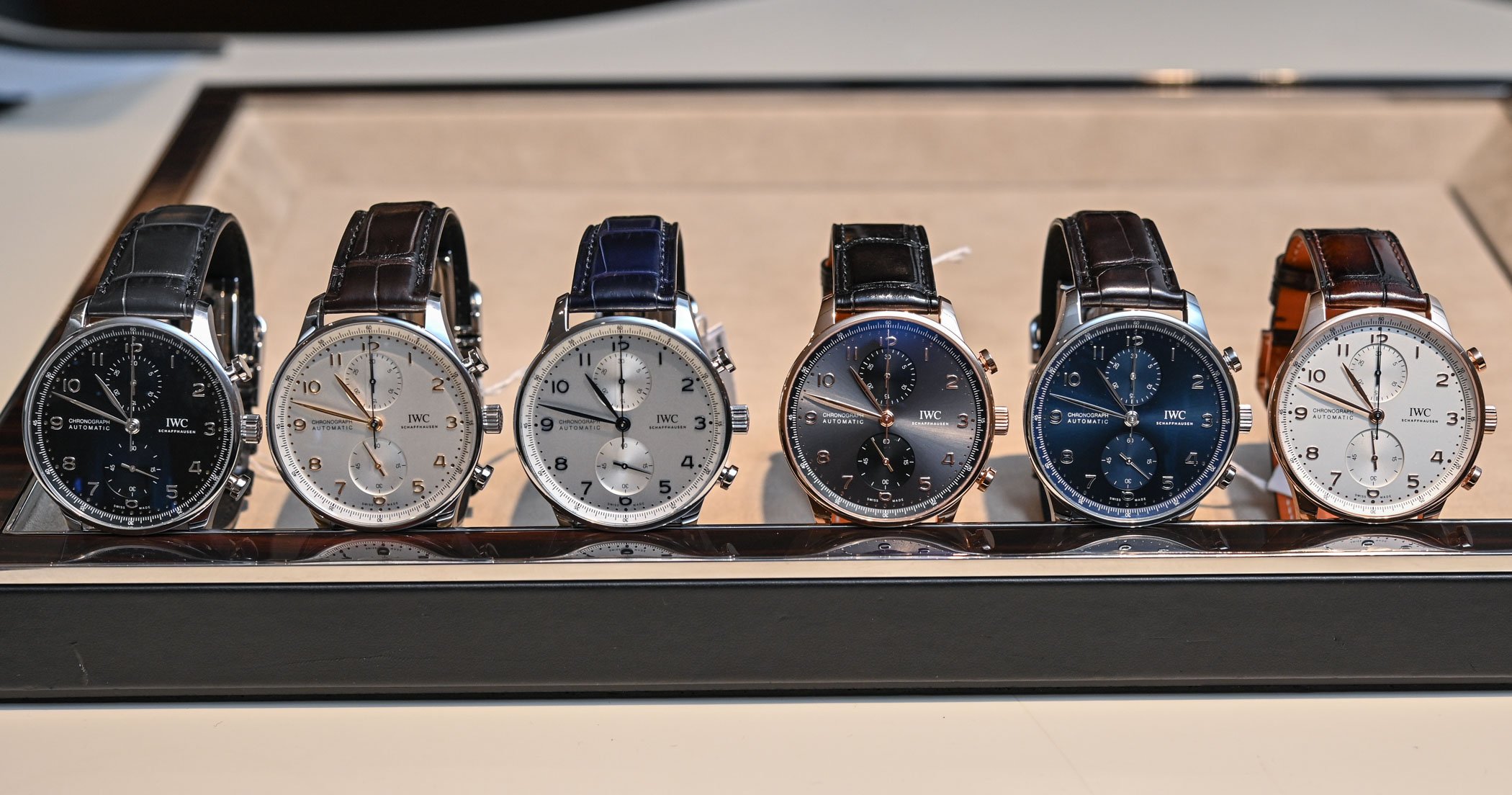



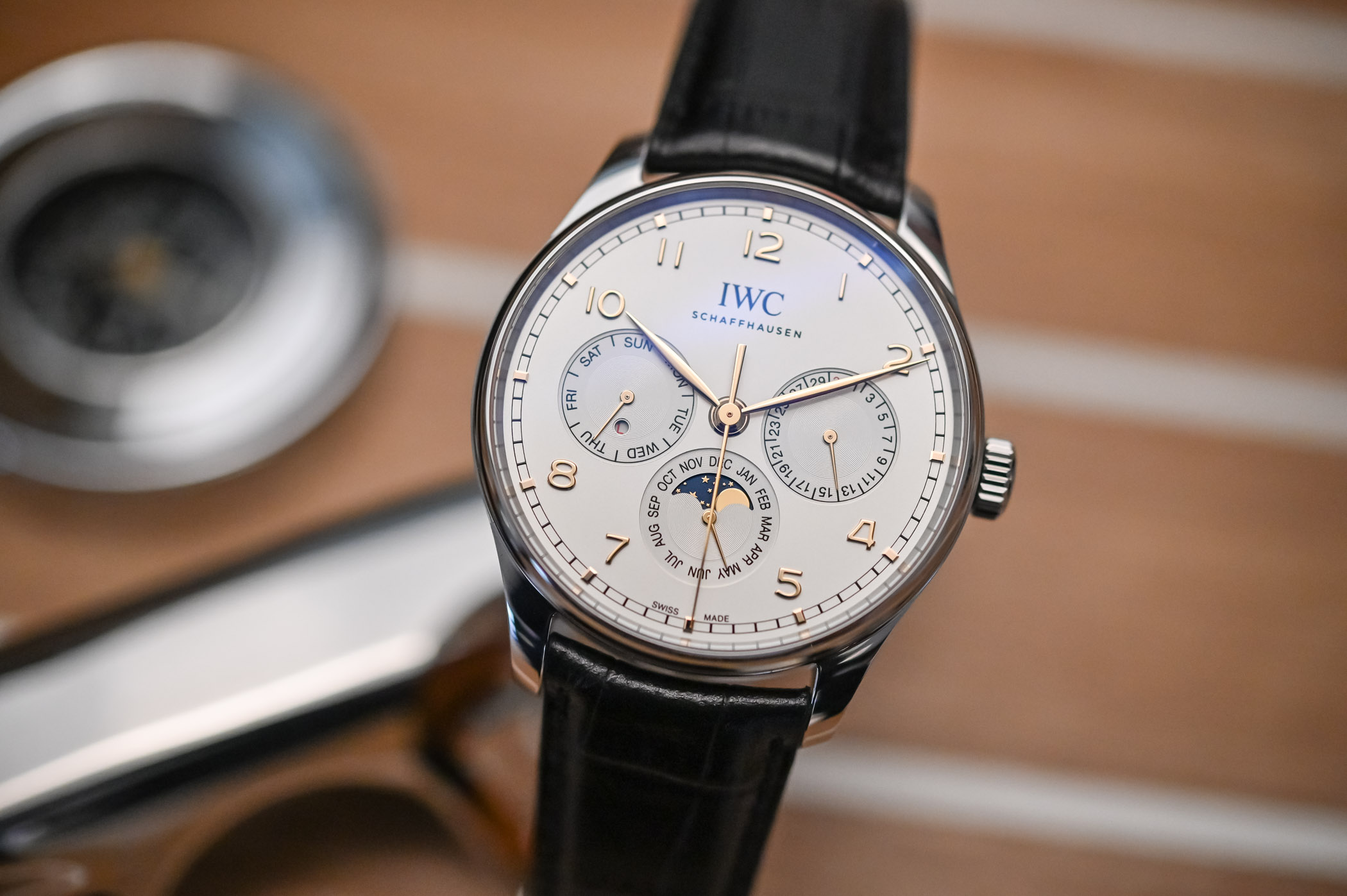

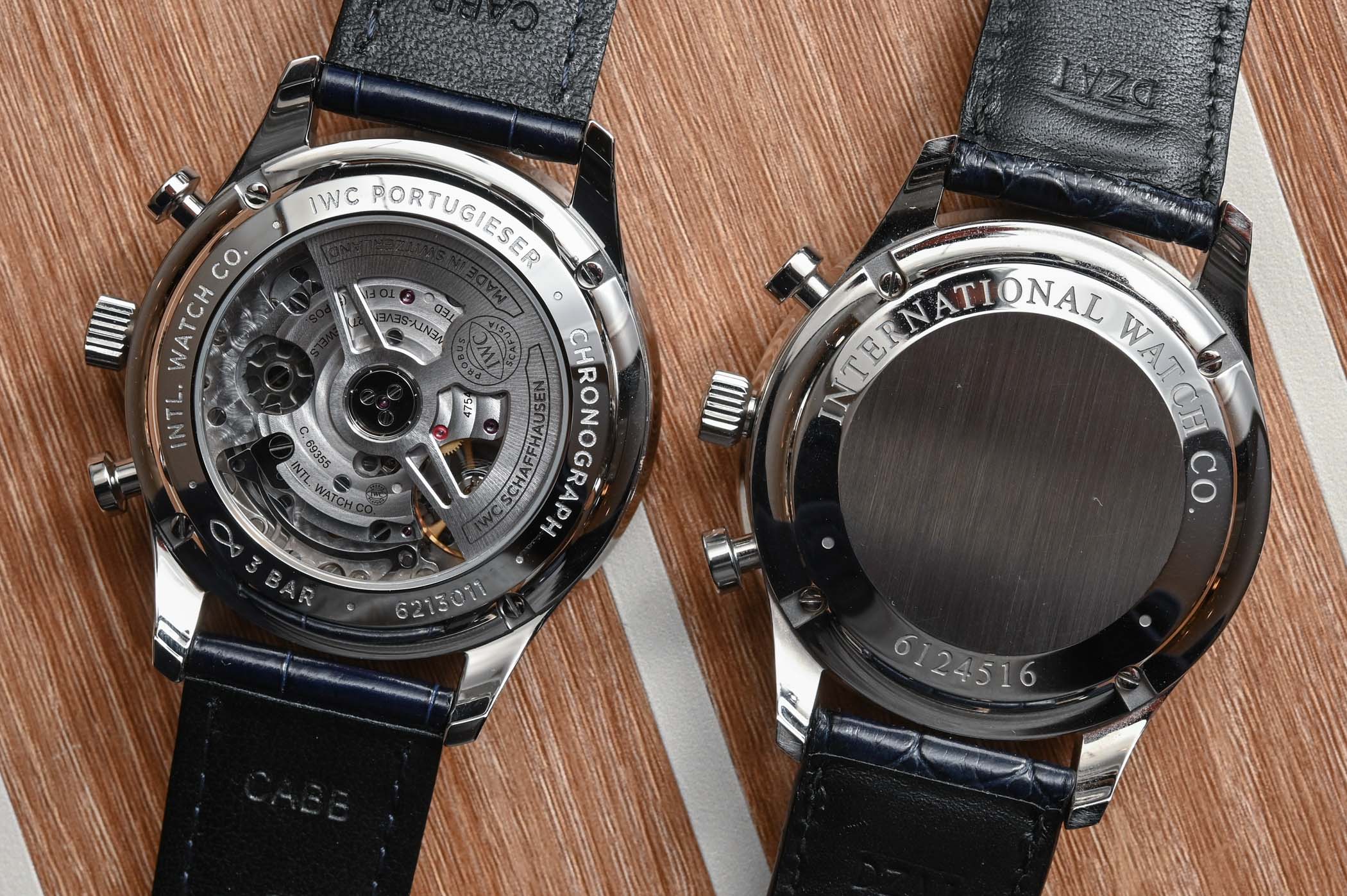





3 responses
I enjoyed that read, wouldn’t mind if it were 5000 words 👌🏼
Recent IWC convert, have always liked their pilot watches and general style, chronos have always been a bit thick which looks to be remedied. A maison of their standing and quality should be all in-house and this is looking to happen. One thing is the Yacht Club as an aqua inspired piece should be at least 100 M water resistant, there is not really any excuse for this and this will probably lose them some sales. If I was a boating enthusiast I would want at least that and just being a watch connoisseur I also want that for a number of reasons. In their pilot range they have really some amazing pieces the Spitfire line springs to mind. I understand why they would not have display backs on the 3 hander as they are keeping it traditional but more would fly off the shelf, pun intended, if they let us see the beautiful new movements.
The ingenieur is a beautiful piece and I am 100% sure will get a new movement very soon, I just hope they put the 32110 in and have a display back and keep it at 120 M water resistant. This watch will become a contender to any Milgauss, datejust, railmaster etc. Please do this IWC!?
Very good interview. Didn’t seem long at all. I enjoy the IWC’s I have owned and am down to one now. Just for the reader’s sake, I have owned two Portugieser perpetual calendars and both had to go back for service. I was pulling out the crown on the first one and the date needle jumped ahead to the next date. I sent the piece in and it was corrected quickly. With my current PPC, one day I noticed the thousands/hundreds year disk had changed from 20 to 22 so when I sent it in the year read 2220. I’m waiting for the piece to come back and understand the pandemic has delayed repairs. I hope IWC is improving the “large” PPC so the problems I have encountered won’t occur in their future watches.